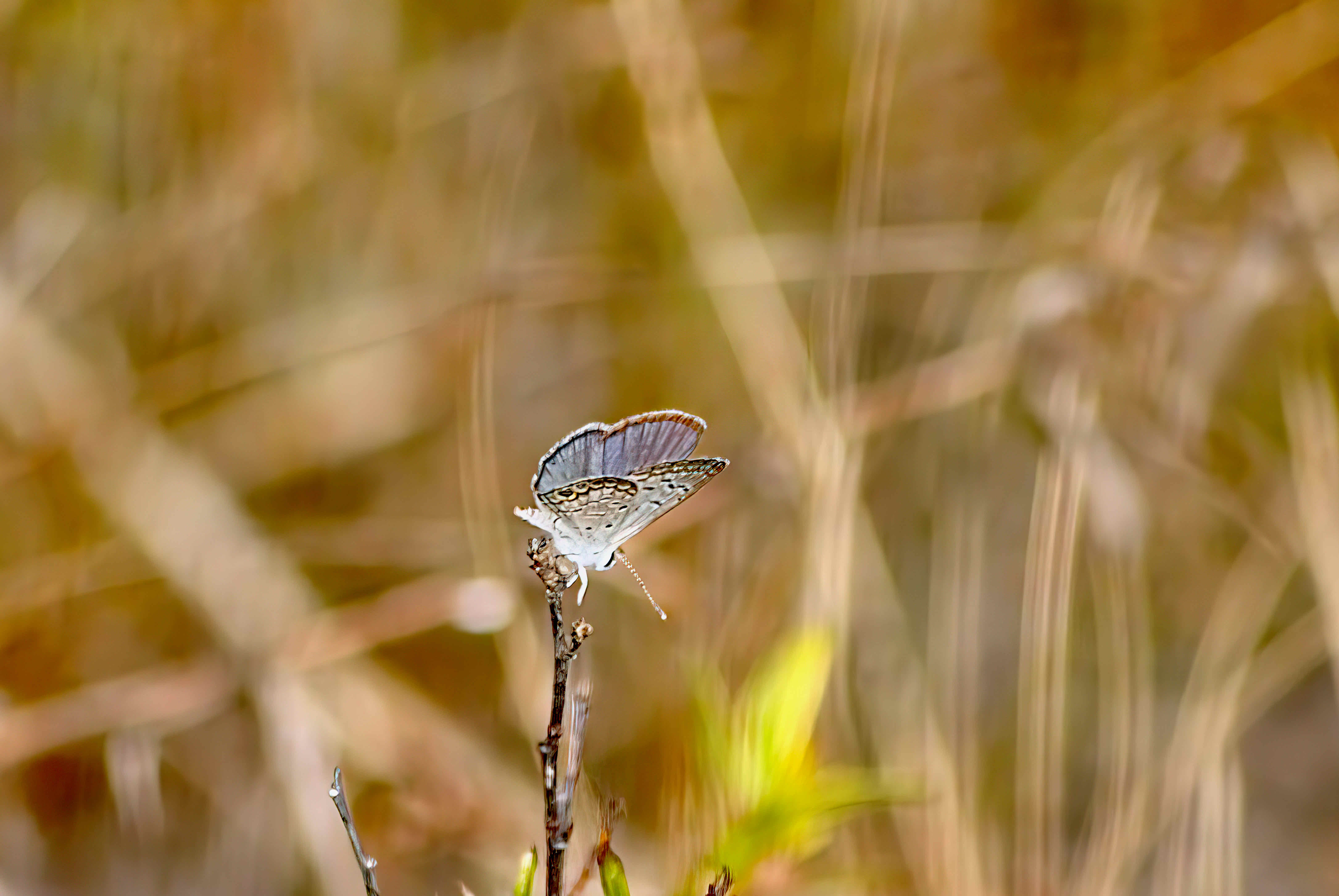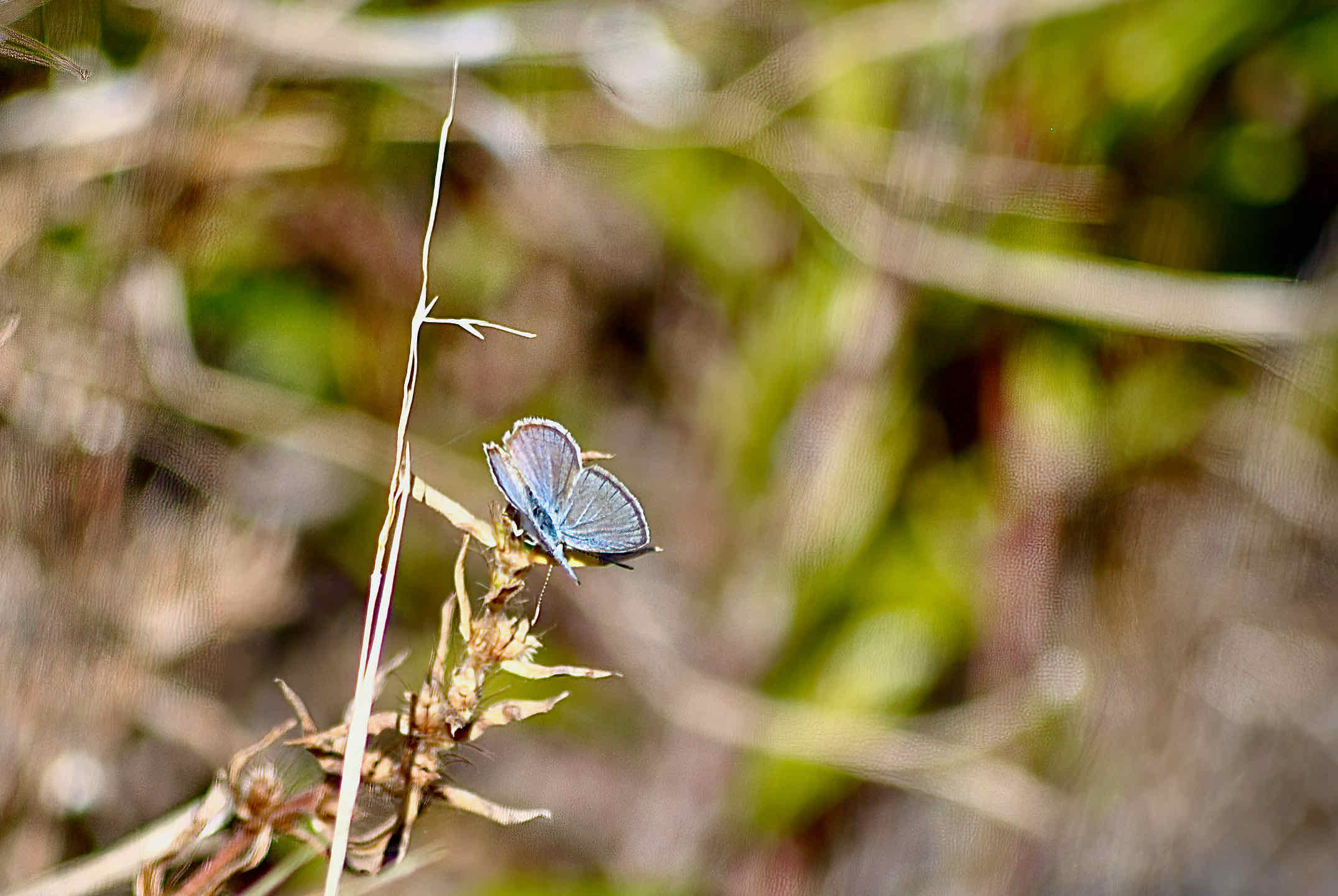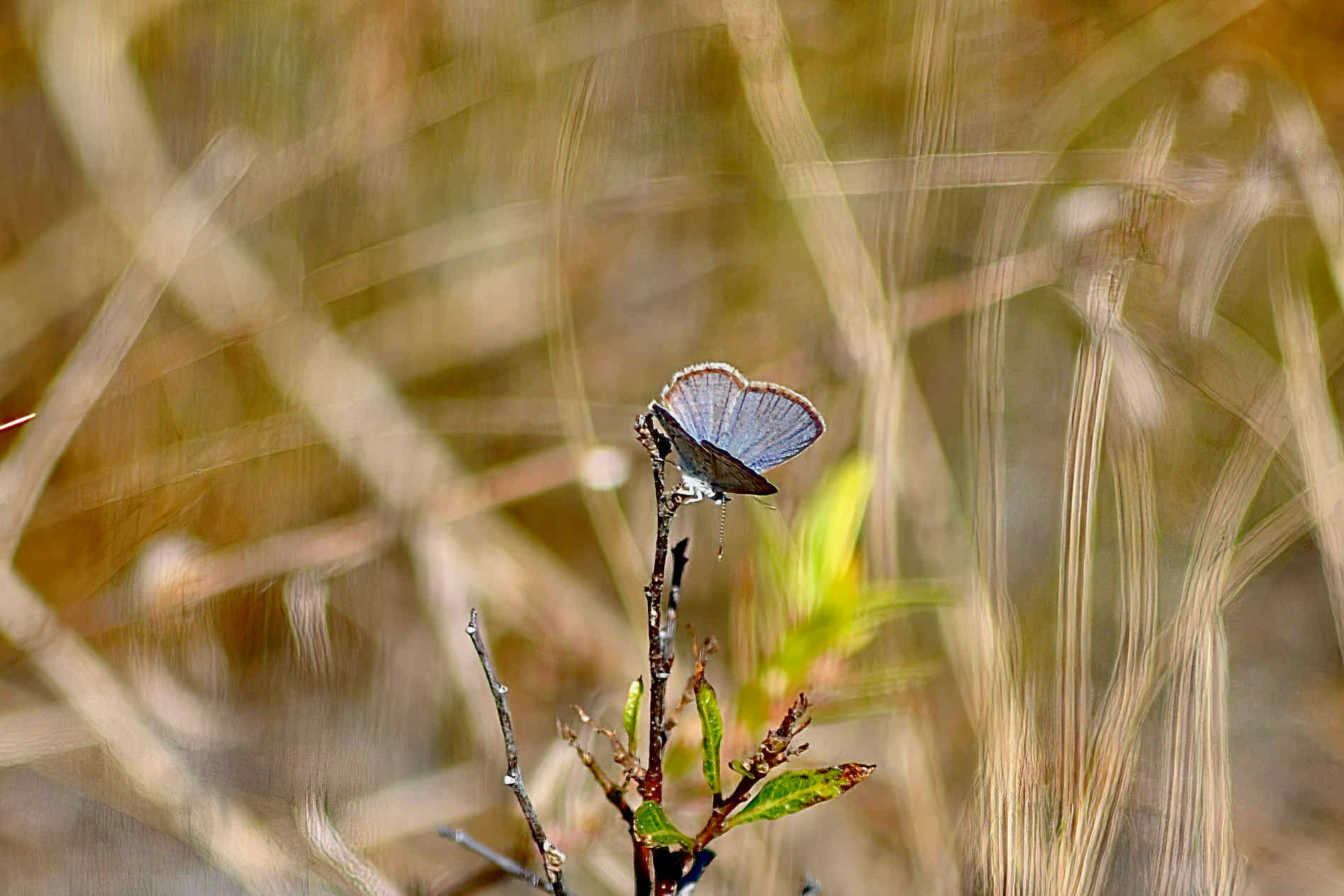
Ceraunus blue butterfly, photographed at Hypoluxo Scrub Natural Area, Hypoluxo, Palm Beach County, in October 2014.
One odd thing about the ceraunus blue butterfly, Hemiargus ceraunus, has nothing to do with the bug itself but rather its status under the federal Endangered Species Act. It isn't anywhere near endangered; in fact it's fairly abundant. But it closely resembles a butterfly that is endangered. Which is why the U.S. Fish and Wildlife Service lists it as threatened.
More on this in a bit, but first some ceraunus blue basics. It is a small, blue butterfly, with a wingspan of an inch, sometimes slightly more, sometimes slightly less. It has dark fringes along the outer edges of its wings. The upper side of the wings are blue-gray, with a brownish border. It is dimorphic, meaning males and females have different looks, males being a lighter shade of blue, females somewhat darker. The hindwings of the females also have a single, large orange and black eyespot.
It's found in the most southern parts of the United States, including all 67 Florida counties, south Texas and the Southwest, including parts of Arizona and Calfornia. It's known to stray as far north as North Carolina. Also within its normal range: the Caribbean, Mexico, Central America and South America.
The ceraunus blue tends to be a ground-hugger, flying just above vegetation, males patrolling for receptive females. In South Florida, it is active all year; in the northern extremes of its range, it's active only in mid- to late summer. In Southern California, it's March through November.
It likes sunny, open areas, like roadsides, fallow farm fields, scrub, open woodlands, parks and yards. It is similar to the cassius blue but has only one dark "eye spot" on each of its hind wings.
Favorite host plants include hairy indigo, creeping indigo, the invasive and poisonous rosary pea and native partridge pea. All are members of Fabaceae, the pea family. Adults aren't picky eaters, nectaring on a wide variety of flowers.
Females lay a single blue egg on the leaves and buds of the host plant; once they hatch, the begin to dine on the plant. One odd thing about ceraunus blue caterpillars: they can vary in color from red to pink to green.
So let's return to our original story. The ceraunus blue population is considered secure pretty much throughout its range, meaning it's numerous enough that it's not likely to go extinct any time soon. However, the incredibly rare Miami blue butterfly is in fact endangered. The ceraunus blue and two other butterflies, the cassius blue and the blue nickerbean butterflies, closely resemble the Miami blue.
So when the U.S. Fish and Wildlife Service officially listed the Miami blue as endangered back in 2012, they listed the three lookalikes as threatened as an additional measure of protection for the Miami blue. That prohibits the collecting of these butterflies for any reason, including commercial, educational or scientific, where their range overlaps with the Miami blue. That includes coastal areas in Central and South Florida.
Ceraunus blues are members of Lycaenidae, the second-largest family of butterflies in the world.
Hypoluxo Scrub Natural Area
Photo Gallery — Click on photo for larger image



